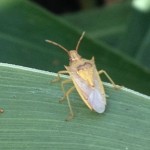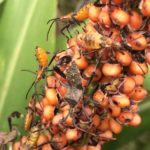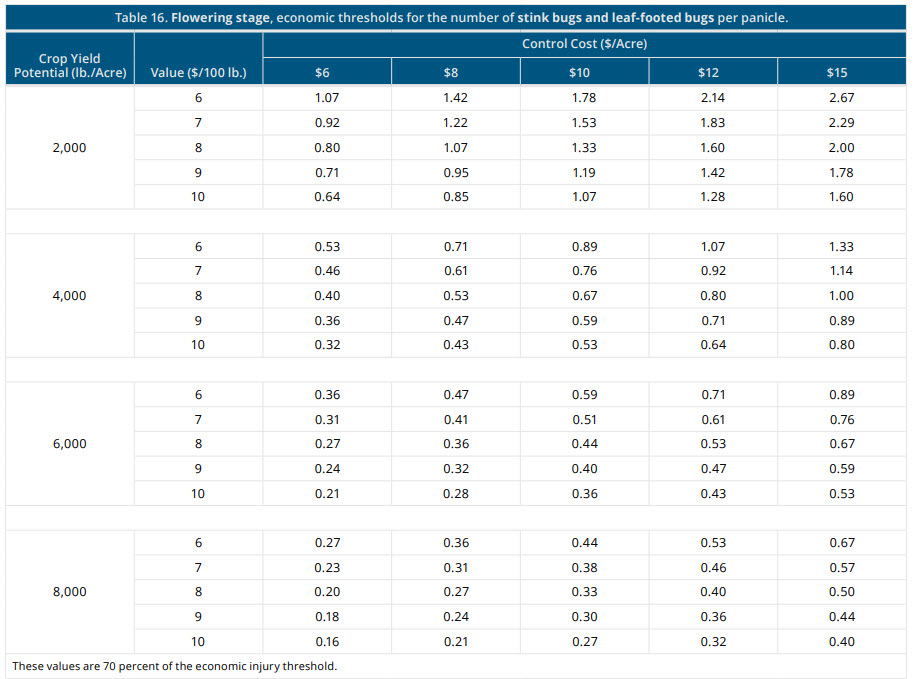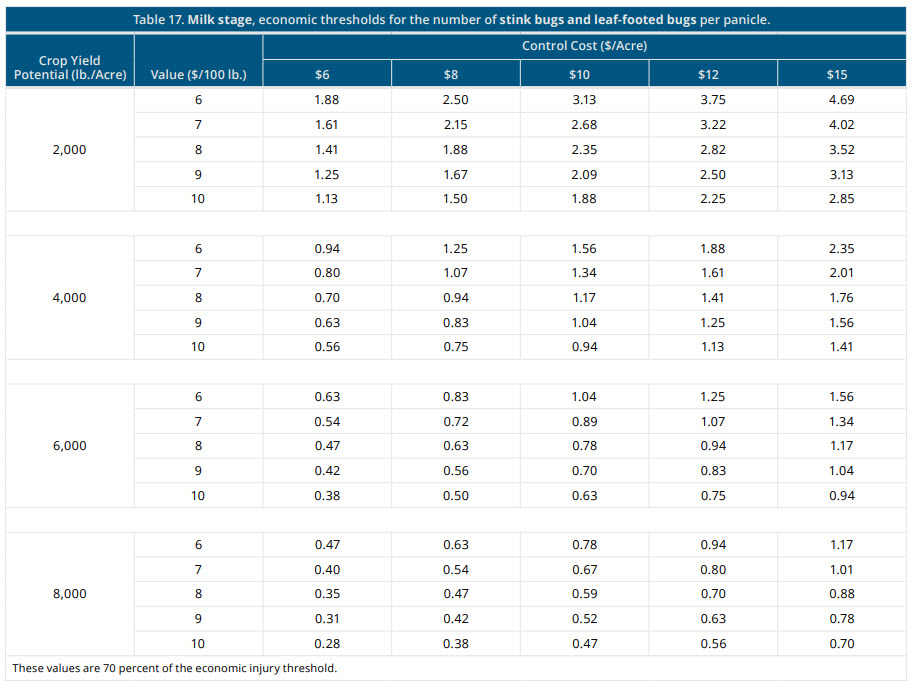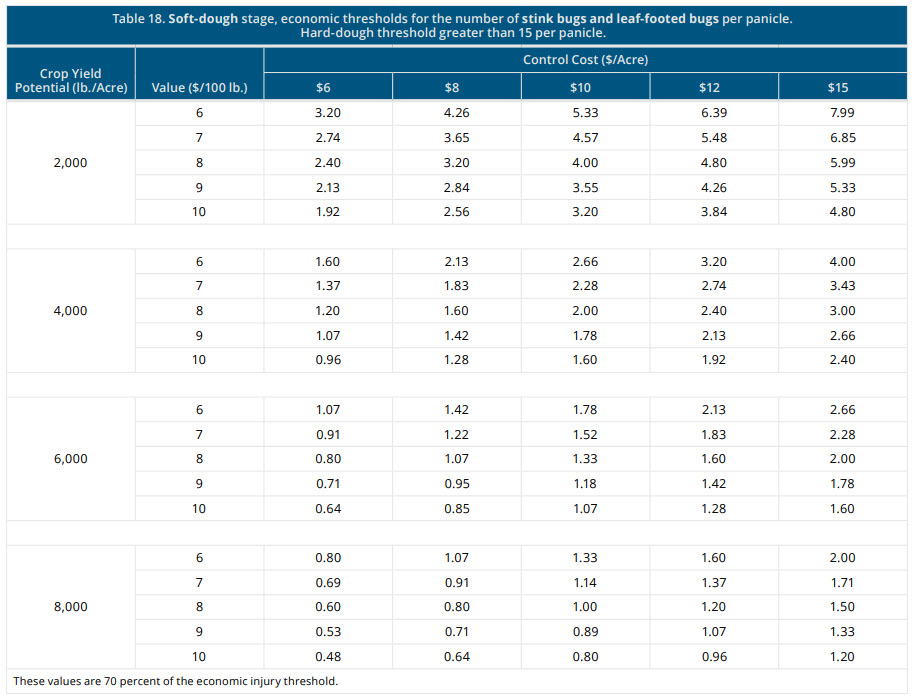Grain Sorghum in the Mid Coast of Texas is blooming and some fields are just past bloom in the Milk stage. Sorghum should be scouted every day or so during bloom to detect economic populations of sorghum midge. During bloom, the primary insect pest is sorghum midge. The economic threshold of sorghum midge is 1 midge per 3-5 plants.
Another important insect pest of sorghum is stink bugs. We have been finding stink bugs in sorghum fields but most are still below the treatment threshold.
The most critical time to protect the crop from stink bugs is from bloom through soft dough stage. The crop becomes more tolerant of stink bugs as it matures and is safe from stink bugs at hard dough.
There are a number of stink bugs that may be found infesting sorghum, but keep in mind that some stink bugs are beneficial predators.
MANAGING INSECT AND MITE PESTS OF TEXAS SORGHUM, ENTO-PU-170
The adult rice stink bug is straw colored, shield shaped, and ½ inch long (Fig. 29). This stink bug is very common along the Gulf Coast but can develop high populations in South and Central Texas as well. The female lays about 10 to 40 short, cylindrical-shaped, light green eggs in a cluster of two rows. The eggs hatch after 5 days. The nymphs require 15 to 28 days to become adults.
Other stink bug species of concern include the southern green, green, and brown species.
The leaf-footed bug is not a stink bug but damages sorghum similarly to stink bugs. Leaf-footed bugs are common in the eastern half of Texas and are usually most common in late-planted sorghum. Leaf-footed bug adults are brown, oblong, and just longer than ¾ inch. A white band extends across the front wings. The lower part of each hind leg is dilated or leaflike.
Damage: Feeding can reduce grain weight, grain size, and seed germination. The bugs cause more damage during early kernel development and less as the grain develops to the hard dough stage. fungi often infect damaged kernels, causing them to turn black and further deteriorate in quality. Damaged kernels rarely develop fully and may be lost during harvest. The extent of damage depends on the species of bug, the number of bugs per grain head, and the stage of kernel development when the infestation occurs. However, the difference among insect species in damage potential is not great, and thus they can be considered equal for management decision purposes. The flowering stage is most sensitive to damage, followed by the milk stage, the soft-dough stage, and lastly, the hard-dough stage. The hard-dough stage is not very sensitive to stink bug and leaf-footed bug feeding. For example, there is no measurable yield impact from as many as 15 rice stink bugs per panicle, but there may be an impact on grain quality.
 Scouting: Grain-head-feeding bugs tend to congregate on grain sorghum heads and are often clumped in distribution, most often along the field margins. The beat-bucket technique is the most efficient way to sample for grain-feeding bugs. You can watch a brief video demonstrating how to scout with a bucket HERE
Scouting: Grain-head-feeding bugs tend to congregate on grain sorghum heads and are often clumped in distribution, most often along the field margins. The beat-bucket technique is the most efficient way to sample for grain-feeding bugs. You can watch a brief video demonstrating how to scout with a bucket HERE
Threshold: For purposes of sampling and computing, thresholds for stink bugs and leaf-footed bugs can be combined into a single count. The economic thresholds are dependent upon the stage of grain development. The thresholds at flowering (Table 16), milk (Table 17), and soft-dough (Table 18) stages are based on all grain-feeding stink bugs and leaf-footed bugs combined, and it is based on crop yield potential, crop market value, and control cost.
More on Sorghum Insect Management HERE
